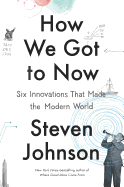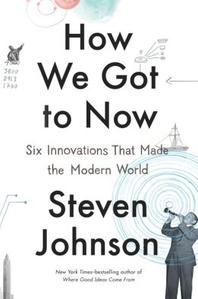

Johnson's treatment of each of his chosen innovations follows a similar pattern: he introduces the subject with an anecdote (as with the discovery of whale oil) or a brief sketch of a character--some obscure (Ellis Chesbrough, who solved Chicago's sanitation problem in the 1850s), others well-known (Galileo, Edison)--and then traces how "an innovation, or cluster of innovations, in one field ends up triggering changes that seem to belong to a different domain altogether." Though in part this is a history of ideas, it's much more the story of the collaborative process, one that's often unintentional and diffuse.
In the case of glass, for example, Johnson persuasively links the work of a small community of 13th-century glassmakers near Venice to the powerful optical telescopes on the summit of Hawaii's Mauna Kea volcano that allow a view of distant galaxies. From early function as "trinkets and empty vessels," he writes, glass has become a "time machine."
The story of cold is equally intriguing. Beginning with Frederic Tudor's quixotic efforts to transport ice to tropical locales early in the 19th century, he describes how Clarence Birdseye used insights he gained while living with his family in Labrador in 1912 to create the modern frozen-food industry. Johnson is interested in much more than the convenience and comfort that flow from these discoveries. Citing techniques that allow the preservation of human semen, eggs and embryos or the changes in population-growth patterns brought about by mass commercial air conditioning, he argues for what he calls a "long zoom" view of history encompassing the "epic scope" of technological change.
Though Johnson describes himself as "resolutely agnostic" on whether all the changes wrought by these chains of innovation ultimately have been for the better, this is a fundamentally optimistic book, if only in the way it pays tribute to our creativity as a species. And when you put on your eyeglasses to read it with a glass of clean, icy drinking water in your hand, you'll be less likely to view these and other features of modern life as commonplace instead of the marvels they are. --Harvey Freedenberg, attorney and freelance reviewer
Shelf Talker: Steven Johnson explores how six chains of innovation have profoundly reshaped our world.

